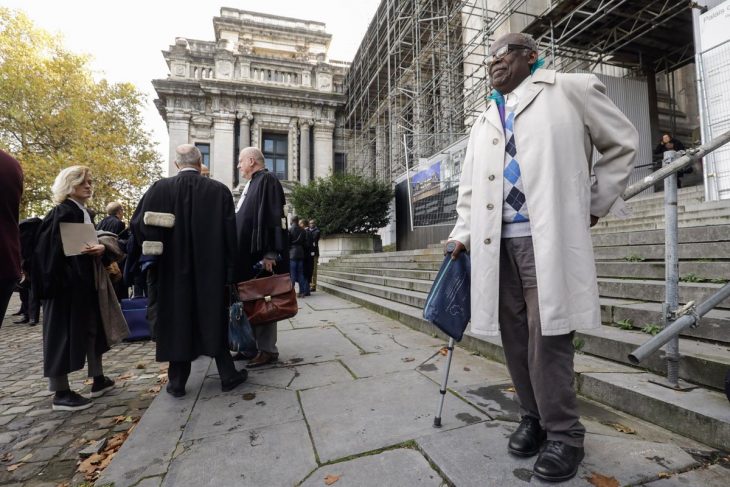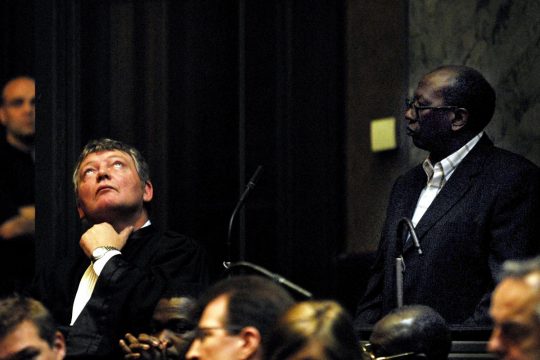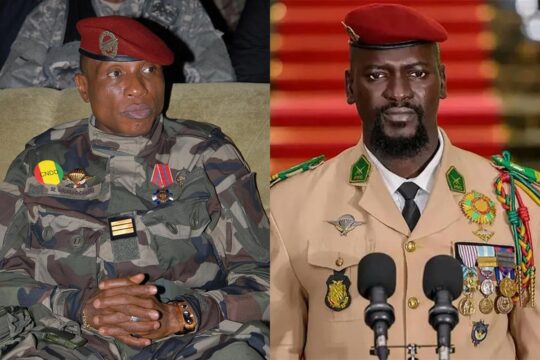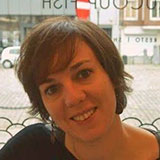The portrait of Fabien Neretse painted by Belgian Federal Prosecutor Arnaud d'Oultremont in the indictment, based on numerous testimonies, is that of a true organizer of the genocide: he belonged to the MRND, President Habyarimana's political party in Rwanda in 1994, and allegedly played an active role in the creation and support of an Interahamwe armed militia. However, other versions collected by Belgian investigators, who have carried out numerous judicial inquiries in Rwanda, do not fit well into this constructed narrative. The accused's lawyers, Jean Flamme and Jean-Pierre Jacques, will try to prove that their client is innocent, as he has been claiming from the start.
A successful career
As of November 7, the first event that the Brussels Court of Assizes will be examining took place in Mataba, Fabien Neretse's hometown, located in the former prefecture of Ruhengeri, in north-western Rwanda. Although he settled in Kigali in the 1970s, Neretse had kept ties to Mataba and still owned a house there. In 1989, he created a school on the plot next to his house, thanks to the high income he earned.
An agricultural engineer with a degree from Stuttgart in Germany, Neretse held senior positions in the civil service from the late 1970s. He was a researcher at the I.S.A.R. (Institute for Agronomic Sciences in Rwanda), then co-director of the BGM project (Bugesera-Gisaka-Migongo), which taught agricultural methods to the rural population. Then he was coordinator of the GBK (Gisenyi-Butare-Kigali) project, financed by the World Bank and the Rwandan government, aimed at protecting forests, reforesting certain areas and developing new agricultural and livestock techniques. But above all, between 1989 and 1992, Fabien Neretse was director of OCIR-café, the parastatal that regulated the production and marketing of coffee, Rwanda's main export product.
Militia at the Mataba school?
The school he founded in Mataba, called the ACEDI-Mataba school, is the starting point for the charges against him. As early as February 1993, when tensions were rising in the country, extremist Hutu students attacked Tutsi students. Neretse then decided to recruit about ten young men to help guard the school. Among these new recruits were former soldiers and gendarmes who introduced others to the use of weapons.
On the basis of several testimonies, the prosecutor claims that these young people formed, as early as April 1994, an Interahamwe militia whose base camp was the school. This militia carried out numerous massacres of Tutsis and Hutu opposition members in the Mataba area, including the murder of Anastase Nzamwita in May 1994 and Joseph Mpendwanzi in June 1994, according to the prosecution.
Other witnesses give a very different version. A man of Tutsi origin says, for example, that the school guards protected him and his mother and that Neretse personally ensured their safety. Another says that the Interahamwe of Mataba were not based in the school and that the role of the young school guards was to protect Tutsi students, nothing else. One witness went so far as to say that there was no Interahamwe militia in Mataba.
Neretse and the MRND
The prosecutor claims that Neretse held a "fairly important" position within the MRND, a party whose senior officials are accused of having created a climate conducive to genocide.
The accused's version is more nuanced. During his first police hearing, Neretse confirmed that he was a member of the MRND, which he joined at the time of the one-party system. He asserts that he was only slightly involved, which is why, according to him, he lost his position as Director of OCIR-café in 1992.
The prosecutor notes, however, that in 1994 the accused was still a member of the prefectural committee in Ruhengeri, the region to which Mataba belongs. On the basis of several testimonies gathered in Rwanda, the prosecutor says Neretse participated in meetings and political rallies - in Kigali, Ruhengeri and Mataba - during which the elimination of Tutsis and "moderate" Hutus was advocated. Six people state that Fabien Neretse participated - but did not speak - at such meetings in Mataba. But three witnesses, including the mayor of this locality, say these meetings did take place but no call for massacre was made. Neretse claims he was only a technical adviser to the prefectural committee.
Murders in Kigali
The indictment is not limited to the massacres committed in Mataba. Neretse is accused of having denounced several of his neighbours in the Nyamirambo district of Kigali, where he lived until mid-April 1994 with his wife and their five children.
On 9 April 1994, two days after the genocide began, the Bucyana, Sissi and Gakwaya families, of Tutsi origin, tried to leave their homes in Nyamirambo to reach a camp of UNAMIR (United Nations Assistance Mission for Rwanda). They gathered on the property of the Sissi family. A truck of soldiers then arrived, quickly followed by a second one, loaded with Interahamwe militiamen.
Family members were taken to the back of the house and beaten violently. The soldiers then opened fire. Ten people were killed, including the Belgian Claire Beckers, her husband Isaiah Bucyana and their daughter Katia. An eleventh person was shot dead trying to pass a military roadblock a few hundred metres away. Two teenagers who emerged unscathed from the shooting will be heard as witnesses during the trial.
The prosecutor and several individuals who are civil parties, including members of the Bucyana-Beckers family, maintain that it was Neretse who gave the alert to the military and the Interahamwe. One says a man named Emmanuel who was Neretse's domestic worker, arrived at the Sissi’s residence with the Interahamwe. Another claims to have seen the accused watching the victims' departure preparations and pointing the Sissi house out to the soldiers. Yet another tells that Fabien Neretse was feared in the district and that he led the Interahamwe. A local resident believes that only two people could have alerted the military: Fabien Neretse, a direct neighbour of the Sissi, or Major Evariste Nyampame, whose plot of land overlooked the rear facade of the Sissi house.
Fabien Neretse denies having denounced his neighbours, claiming that the Sissi were friends. He also states that he has never had an employee named Emmanuel in his service and that his family itself was the target of attacks in Kigali at the end of March 1994.
A 6-WEEK TRIAL WITH 126 WITNESSES
In Fabien Neretse's trial beginning on 7 November before the Brussels Court of Assize, 106 witnesses are summoned to appear and 25 hearings are scheduled until 16 December, when the jury should enter into deliberations.
After the reading of the indictment, the questioning of the accused will take place on 8 November. Then, on November 12 and 13, the court will watch two documentaries on the genocide in Rwanda and hear from various authors and university professors specializing in the subject. On 14 November, it will hear the investigating judges and investigators and, the following day, the persons named as plaintiffs, including the sister of Claire Beckers, the son of the latter and Isaiah Bucyana, as well as the daughter and son of Joseph Mpendwanzi, a Hutu opponent killed on 19 June 1994 in Gitarama prefecture. The court will also hear the two victims who survived the 9 April 1994 shooting that decimated the Bucyana, Sissi and Gakwaya families in Kigali.
On November 18 and 19, neighbours of these families will be called to testify. Between 29 November and 3 December, the hearings will be of people who knew or met Fabien Neretse in Mataba between mid-April and July 1994. These include the former Prefect of Ruhengeri and the former Mayor of Mutaba, and two men who were convicted in Rwanda of the murder of Anastase Nzamwita.
The Fabien Neretse trial is the fifth trial in Belgium relating to the Rwandan genocide. On 8 June 2001, the Brussels Court of Assizes condemned the "Butare Four". Alphonse Higaniro, convicted of planning massacres through his political writings and letters, was sentenced to 20 years in prison. Two nuns, Sister Gertrude and Sister Maria Kisito, convicted for the killing of an unknown number of people at the Sovu convent, were sentenced to 15 and 12 years in prison respectively. A university professor, Vincent Ntezimana, found responsible for the murder of a colleague and a neighbour, was sentenced to 12 years in prison.
On 29 June 2005, the same court sentenced two half-brothers, Etienne Nzabonimana and Samuel Ndashyikirwa, to 12 and 10 years' imprisonment respectively, for their participation in the massacres committed in Kibungo prefecture (south-east Rwanda). On 5 July 2007, the Belgian courts sentenced former Rwandan Major Bernard Ntuyahaga to 20 years in prison for his responsibility in the death of ten Belgian UN peacekeepers.
On 1 December 2009, it was Ephrem Nkezabera who was sentenced to 30 years' imprisonment. As a senior Interahamwe official, he had financed the Radio-Television Libre des Mille Collines, which broadcast messages of hatred against Tutsis. His conviction was overturned and he died before being retried.
Another trial relating to the genocide in Rwanda is scheduled before the Brussels Assizes Court. The case concerns Ernest Gakwaya and Emmanuel Nkunduwimye, suspected of having been members of the Interahamwe militia.








